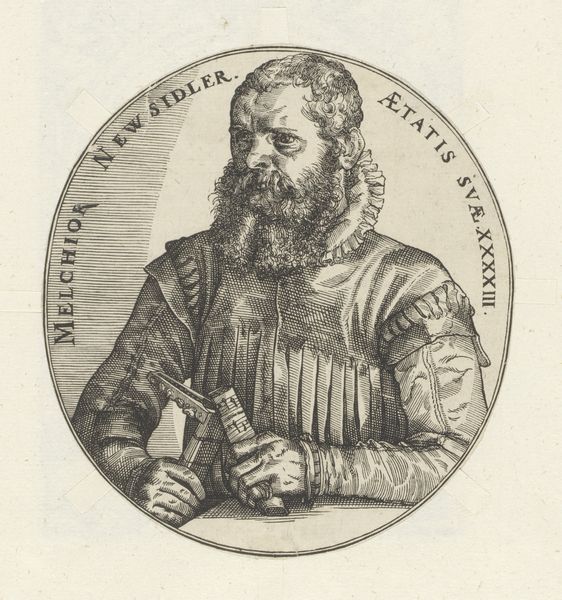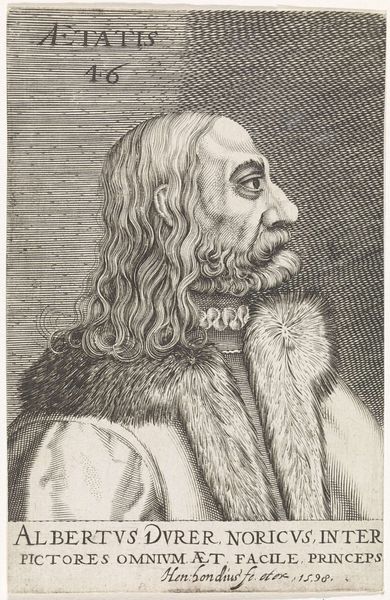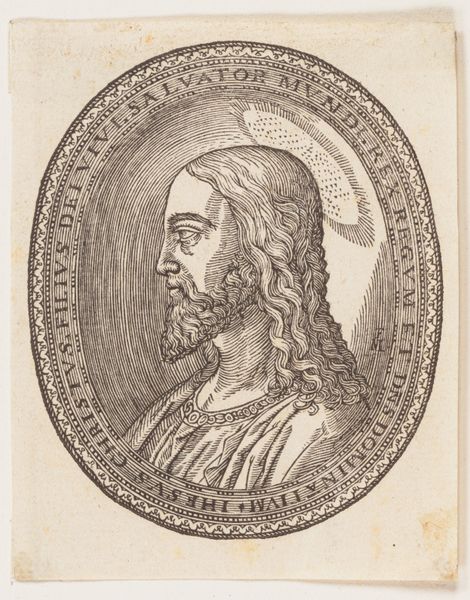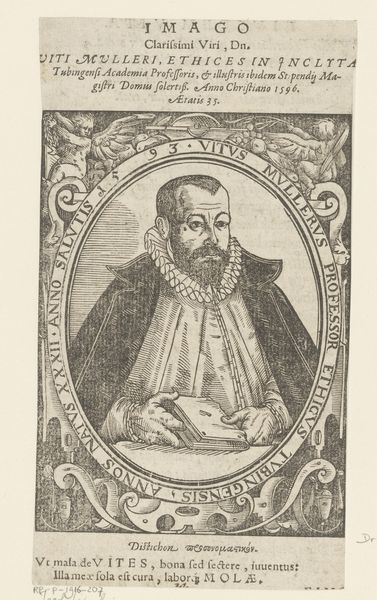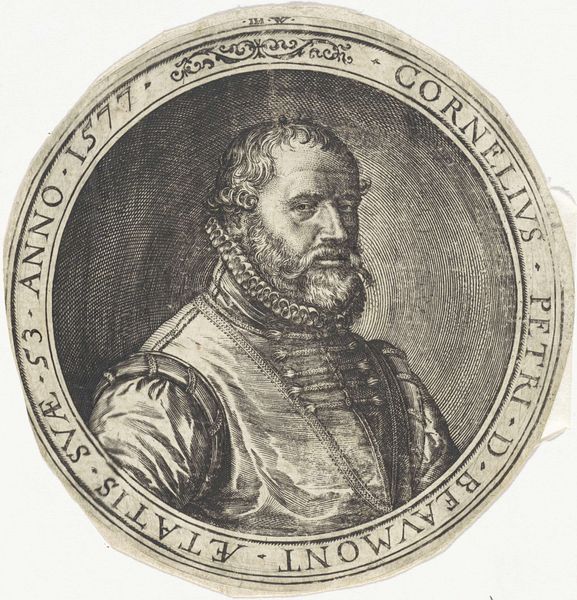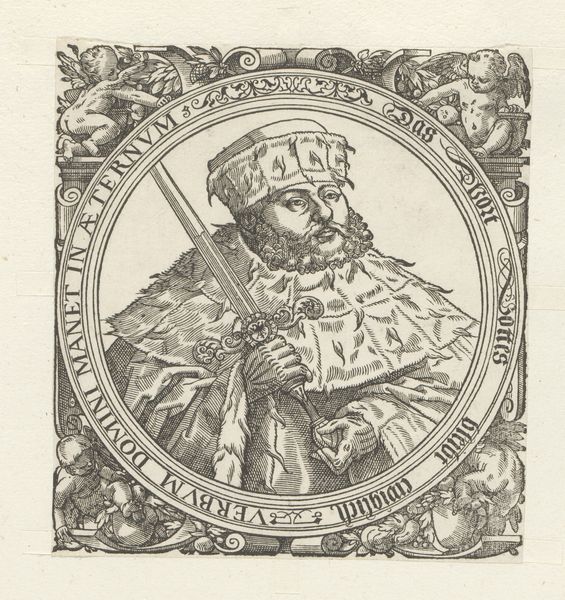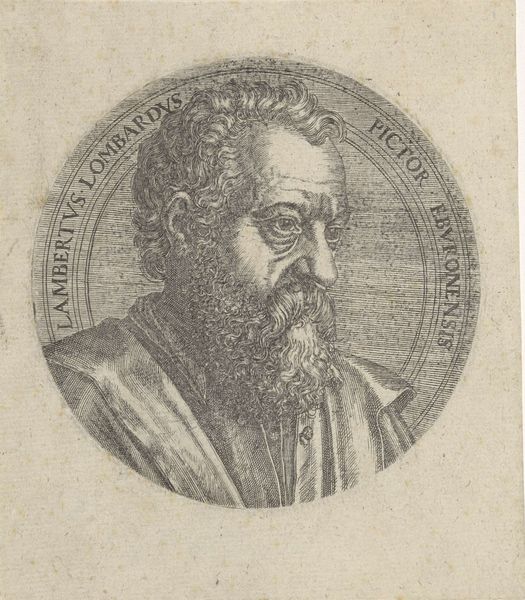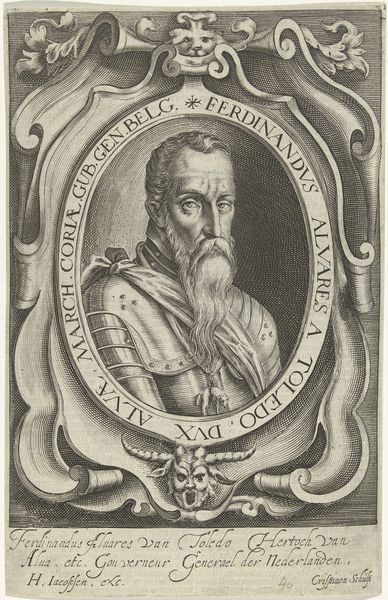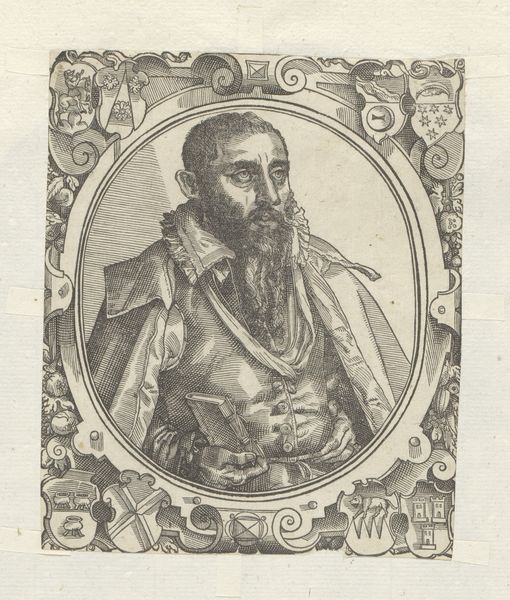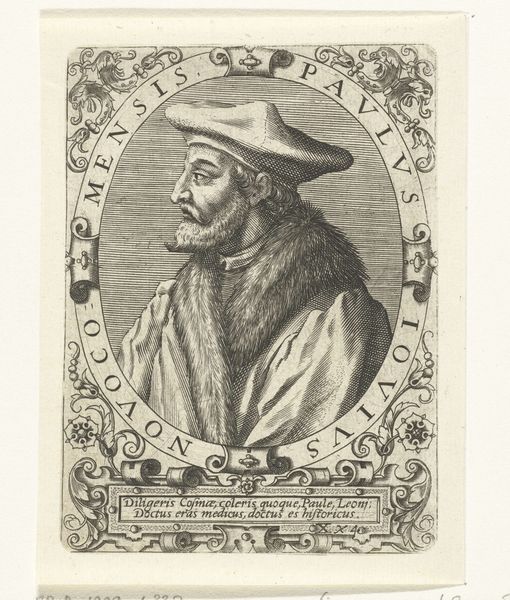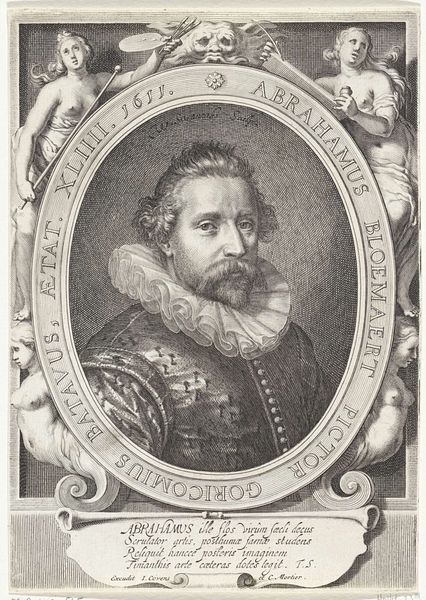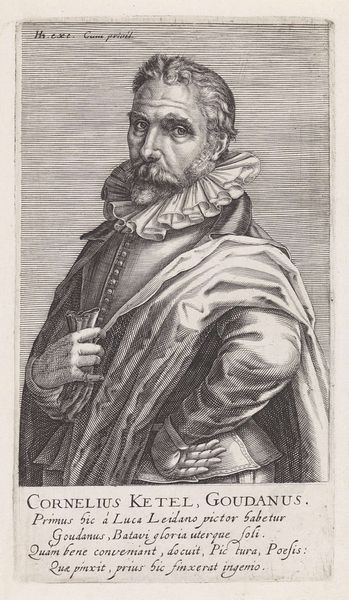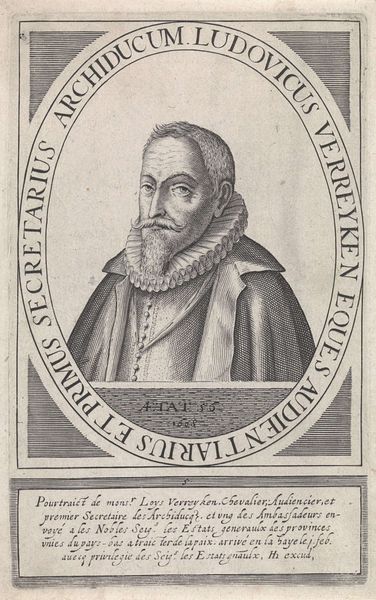
print, intaglio, engraving
#
portrait
#
pencil drawn
#
facial expression drawing
#
light pencil work
# print
#
intaglio
#
pencil sketch
#
old engraving style
#
11_renaissance
#
portrait reference
#
pencil drawing
#
limited contrast and shading
#
portrait drawing
#
pencil work
#
engraving
Dimensions: height 100 mm, width 99 mm
Copyright: Rijks Museum: Open Domain
Editor: So, this is "Portret van Albrecht Dürer," a 1571 engraving by Wierix, currently housed at the Rijksmuseum. It has an undeniably archaic feel – very austere and formal. What do you see in this portrait beyond just a historical record? Curator: This image isn't simply about commemorating Dürer's likeness. Consider the act of representation itself during the Renaissance. Who had the power to be portrayed, and what did that signify? The inscription encircling Dürer – how does it contribute to the construction of his identity? It frames him within a very specific societal context. Editor: I see what you mean! The inscription seems to elevate him, placing him among the elites. Do you think this image aimed to solidify Dürer's artistic legacy within the male-dominated art world? Curator: Precisely! This portrait can be interpreted as a deliberate act of self-fashioning, or perhaps fashioned by someone else, reinforcing established hierarchies of power and artistic genius. Who gets remembered and how, and who controls the narrative, becomes a central question when analyzing portraits like this one. What do you make of Dürer’s gaze in the image? Where does it lead you? Editor: He's not looking at us, exactly, but past us, or beyond us. As though he sees something the rest of us cannot. Does the act of memorialization then obscure other potentially just as important or innovative artists active at the time who weren't painted? Curator: Exactly. What we choose to remember inherently involves a process of forgetting. By centering certain figures like Dürer, we risk marginalizing the contributions of women, people of color, and artists from less privileged backgrounds whose stories were not deemed worthy of preservation. The image invites reflection upon art's role in reinforcing these unequal power structures. Editor: I never thought about it that way. It makes me realize how important it is to critically examine the narratives we inherit from the past, so that our narratives are more inclusive today. Curator: Precisely. That is why it's important to see images as more than just pretty pictures but as potent carriers of cultural values, biases, and ideologies.
Comments
No comments
Be the first to comment and join the conversation on the ultimate creative platform.
